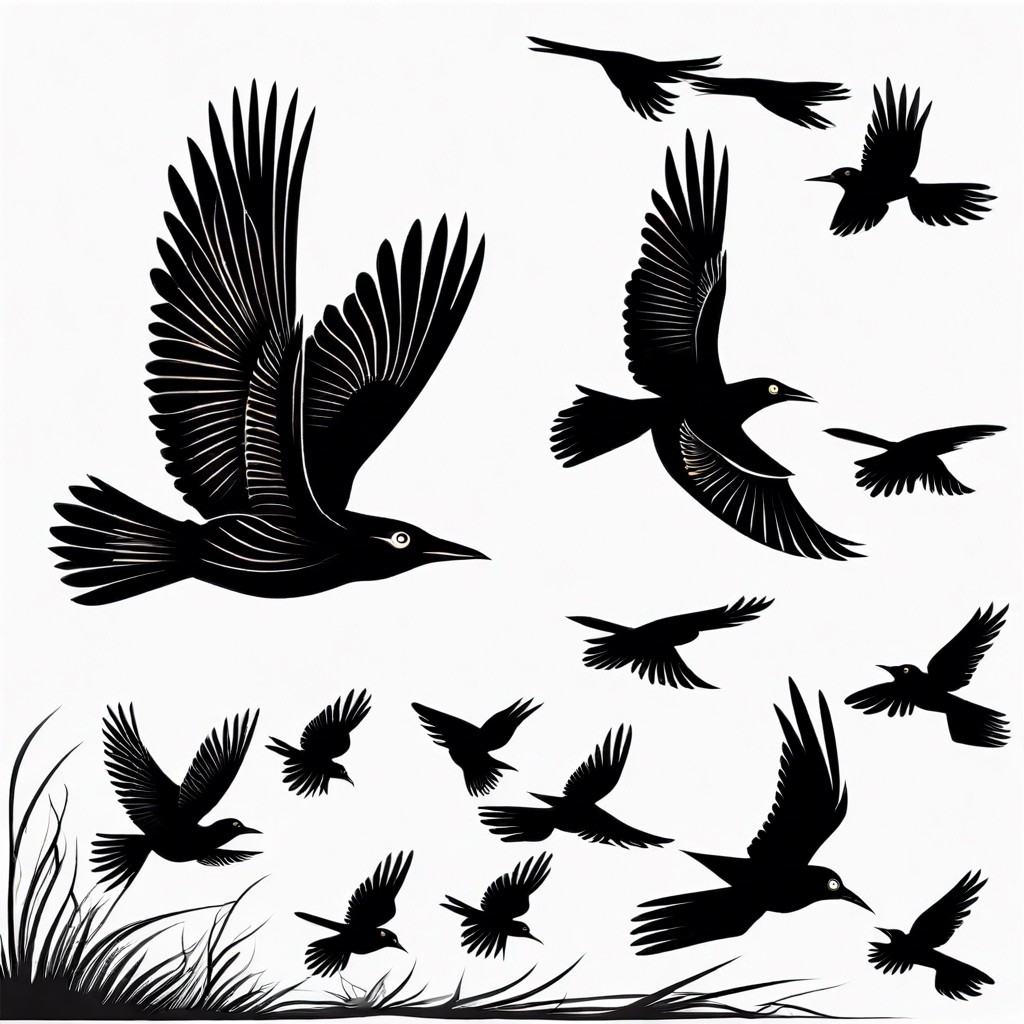Discover the spiritual symbolism and meaning behind encountering a flock of black birds.
The sight of a flock of black birds can stir curiosity and wonder. From their deep cultural symbolism to spiritual significance, these avian gatherings are rich with meaning. Whether seen as omens, mystical tokens in dreams, or environmental indicators, understanding black birds provides fascinating insights. Dive into this exploration to uncover what a flock of black birds might be signaling in your life.
Key takeaways:
- Black birds symbolize transformation and new beginnings.
- They are messengers bridging material and spiritual realms.
- Cultural beliefs range from ominous to protective interpretations.
- Dreams of black birds signal personal growth or anxieties.
- Their flocks indicate seasonal changes and ecosystem health.
Cultural Symbolism

In many cultures, black birds, especially crows and ravens, hold significant symbolic meaning. They appear frequently in mythology and folklore.
In Norse mythology, Odin had two ravens, Huginn and Muninn, who represented thought and memory. They flew across the world to gather information for him.
Native American cultures often view crows as messengers and symbols of transformation. They are seen as mediators between the material and spiritual worlds.
In many European traditions, a flock of black birds is considered an omen, often associated with mystery or the supernatural. In Celtic mythology, they were linked to the goddess Morrigan, representing sovereignty and war.
Asian cultures sometimes interpret black birds as signs of protection. For instance, in Chinese folklore, they are believed to dispel evil spirits.
Spiritual Significance
In spiritual contexts, gatherings of black birds often symbolize transformation and new beginnings. They’re seen as harbingers of change, reminding us that life’s cycles are ever-evolving.
Some believe these birds are messengers from the divine, urging one to trust their intuition. They may signal a period of deeper understanding or heightened awareness.
Additionally, black birds can represent protection. Their presence might suggest a need to guard oneself or to create stronger boundaries.
Others interpret them as symbols of mystery and the unknown, encouraging curiosity and a willingness to explore life’s deeper questions.
Omens and Superstitions
In many cultures, black birds are often seen as harbingers of change or transformation. Some traditions consider them messengers from the other world, bridging the gap between realms.
In Western superstitions, a flock of black birds can be ominous, associated with death or misfortune. This stems from their dark color and scavenger nature.
Conversely, some Native American tribes see black birds as symbols of renewal. They believe these birds carry warnings or messages, urging people to pay attention to their surroundings and inner thoughts.
In Celtic lore, they are often connected to battlefields, symbolizing both the end and the beginning. These ancient beliefs highlight their dual nature—both ominous and transformative.
Interpretation in Dreams
Seeing a flock of black birds in dreams can be intriguing and multi-faceted. They often symbolize deeper meanings, nudging the subconscious to pay attention.
A common interpretation is transformation. Black birds, often linked to death and rebirth, can signify personal growth or significant life changes.
Feelings of foreboding or uncertainty may also be connected. If the dream evokes fear, it might reflect anxieties or unresolved issues.
Black birds in dreams can also signal a need for introspection. Their presence encourages delving into hidden aspects of the psyche, prompting self-discovery.
Finally, they may represent messages or wisdom from the unconscious. Paying attention to their behavior and feelings evoked can unlock insights.
Each dream is unique, influenced by individual experiences and emotions, making personal context crucial.
Seasonal and Environmental Indicators
In certain seasons, the appearance of black birds, especially in large numbers, can provide valuable insights into environmental changes. Here are some key points:
First, the presence of a flock often signals the changing of seasons. For instance, many black birds migrate in autumn and spring, coinciding with temperature shifts.
Second, their gathering can indicate food availability. When resources are abundant, you might notice more black birds flocking together to take advantage.
Third, these birds can serve as indicators of ecosystem health. A large, thriving flock suggests a balanced environment, whereas a sudden decrease might raise concerns about local ecological disruptions.
Noting these patterns helps one appreciate the intricate connection between nature and the rhythm of wildlife.





